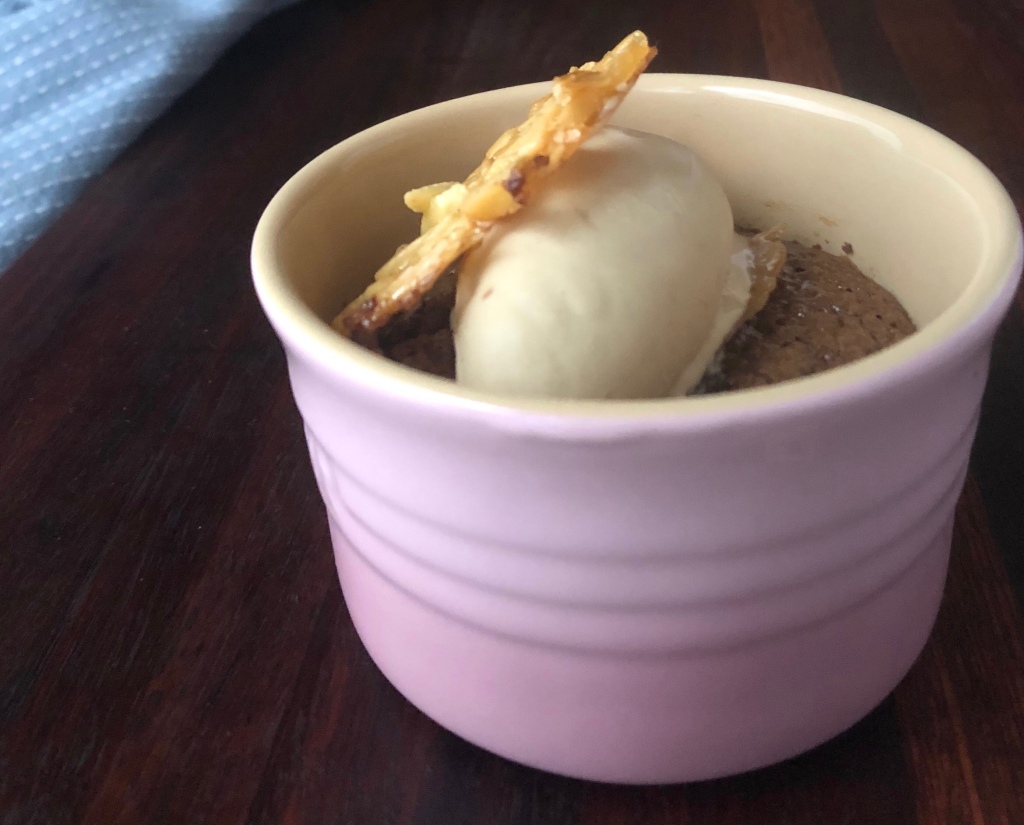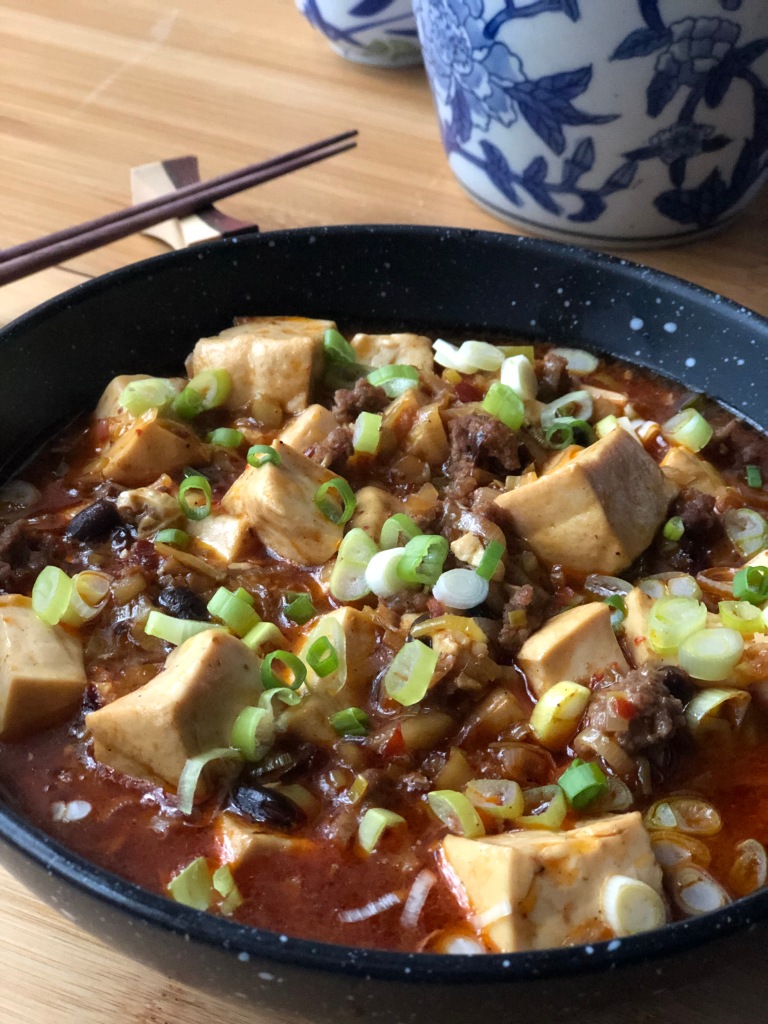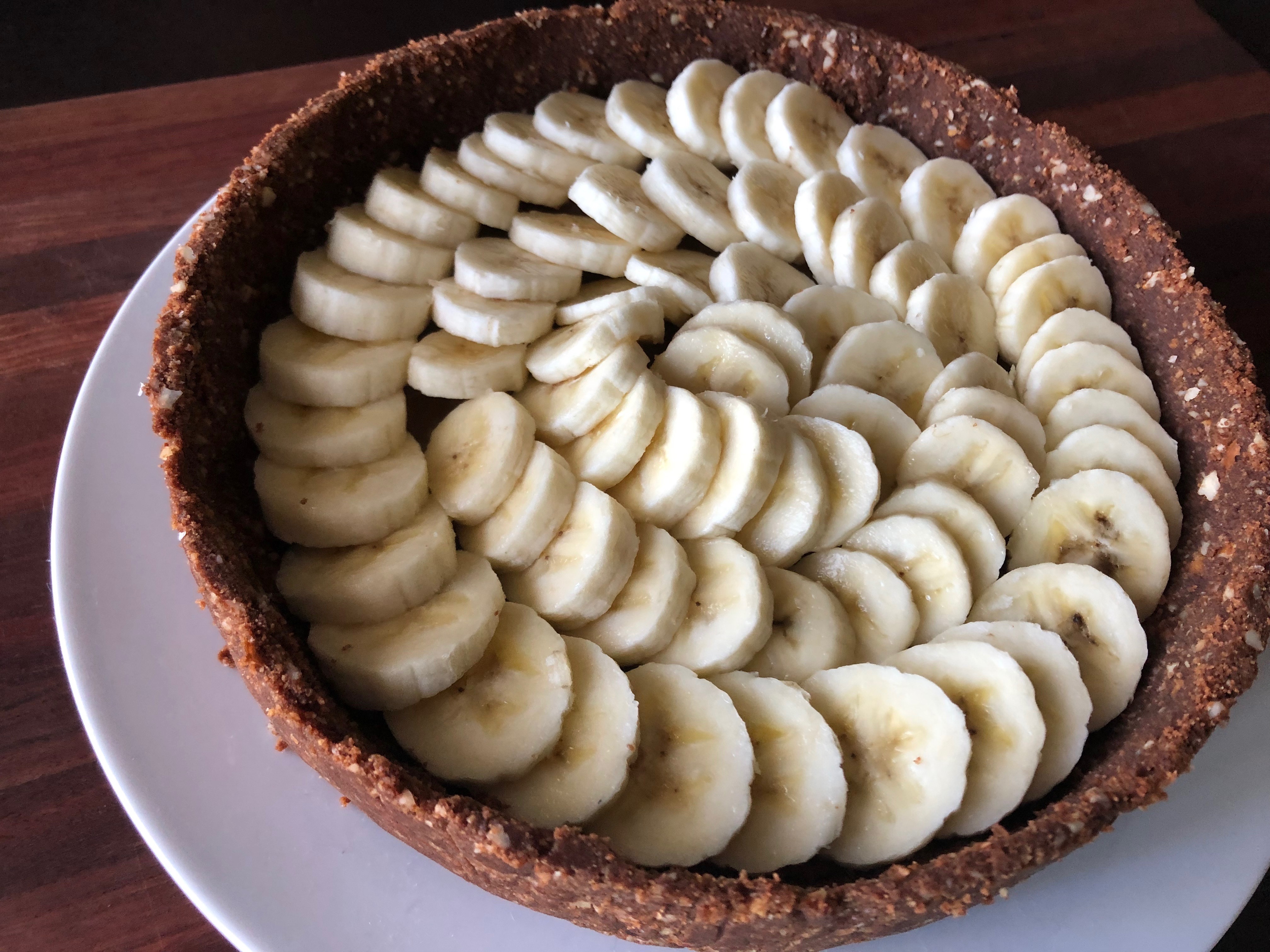
A while ago we made a batch of Earl Grey Ice Cream, which was so delicious and had the smoothest, creamiest consistency. It just seemed like it needed a few more elements to make it a special dessert worth serving at a dinner party. It’s winter here in Sydney so there’s nothing better than a nice warm little ramekin filled with a gooey chocolate pudding. Topped with the ice cream and then a crunchy little shard of almond tuile, this dish was the perfect end to our recent dinner party.
Best of all, everything can be made in advance, leaving you more time to chat with your guests and enjoy a glass of wine! We made the ice cream a few days ahead and stored it in the freezer. The puddings were prepared in the morning and stored in their ramekins in the fridge until ready to bake. The tuiles can be made a few hours ahead, left to cool and then stored in an airtight container until ready to serve. You’ve got to love a delicious dessert as easy to assemble as this!
Of course, if you’re looking for a comforting pudding without all the bother, you can just make the pudding by itself and add a scoop of store-bought ice cream. Or try toasting a few slivered or flaked almonds to scatter over the pudding.
This recipe serves 6 people, although you will have a lot of leftover ice cream and about twice the amount of tuiles as needed (which can be handy if you need a few tries to get your tuiles perfect like we did!)
Earl Grey Ice Cream
- 400ml full-cream milk
- 5 Earl Grey teabags
- 160g caster sugar
- 5 egg yolks
- 450ml thickened cream
- Place the milk and teabags in a heavy-based saucepan and bring to a simmer over a medium heat. Reduce the heat to low and leave to infuse for 10-15 minutes, stirring occasionally, until the milk has become a deep brown colour and tastes strongly of tea.
- Remove the tea bags and bring the milk back up to a simmer. Add the sugar and stir until dissolved.
- Place the egg yolks in a large mixing bowl and lightly whisk. Gradually pour the hot milk mixture into the bowl, whisking continuously so the eggs don’t curdle.
- Pour the mixture back into the saucepan and keep stirring over a low heat until thickened enough to coat the back of a spatula.
- Set aside to cool for about 10 minutes, then add the cream and stir well. Refrigerate the mixture for at least two hours, or overnight.
- Churn the mixture in an ice-cream maker according to the manufacturer’s instructions. You can serve the ice cream immediately from the ice cream maker, although it will have a soft-serve consistency. Or you can place it in an ice cream container and freeze until ready to serve. Just be sure to remove the ice cream from the freezer 10 minutes before you want to serve it.
Chocolate Puddings
- 100g dark chocolate, chopped
- 125g butter
- 2 eggs
- 2 egg yolks
- 50g caster sugar
- 50g ground almonds
- 1 tsp sea salt flakes
- butter or vegetable oil for greasing
- Grease 6 ramekins or oven proof dishes and set aside. Preheat oven to 170°C.
- Place the chocolate and butter in a bowl and set over a saucepan half filled with simmering water, making sure the water doesn’t touch the bowl. Allow the chocolate and butter to melt and stir together.
- Whisk the eggs, egg yolks and sugar together for 4 minutes, until pale and thick. Fold in the chocolate mixture, ground almonds and sea salt.
- Spoon the mixture into the prepared ramekins and set aside or refrigerate until ready to cook.
- When you are ready to serve, bake the puddings for 12-14 minutes, until raised a little but still soft in the middle.
Almond Tuiles
- 30g water
- 30g honey
- 110g butter
- 115g icing sugar
- 25g plain flour
- 60g slivered almonds, toasted
- Preheat oven to 160°C.
- Heat honey and water in a small pot over a medium heat until the honey has melted.
- Sift the icing sugar and flour into the liquid mixture and stir well to incorporate.
- Add the slivered almonds and stir well.
- Place the tuile mixture in the fridge to cool for about 20 minutes.
- Line a baking tray with baking paper.
- Using a teaspoon measure, take out one teaspoon of the mixture at a time and roll in your hands to create a small ball.
- Place 6 – 8 balls of mixture on the baking tray, leaving room for them to spread as they cook.
- Bake in the oven for 10 minutes or until a deep amber colour.
- Remove from the oven and allow to cool.
- If you’ve managed to create perfect tuile circles, well done! If not, use a cookie cutter to cut out 5cm circles. Or you can snap the tuile into shards instead.
- Allow the tuiles to cool completely before serving. If not serving immediately, place in an airtight container until ready to serve.
To Serve:
- Self-Saucing Chocolate puddings
- Earl Grey Ice Cream
- Almond Tuiles
- 1 lemon
- While baking your puddings as described above, use a spoon dipped in warm water to make six quenelles of ice cream, or you could use an ice cream scoop instead.
- Once the puddings are ready, use a microplane to grate a pinch of lemon zest over the pudding.
- Top with a quenelle/scoop of ice cream.
- Add the Almond Tuile and serve immediately.












